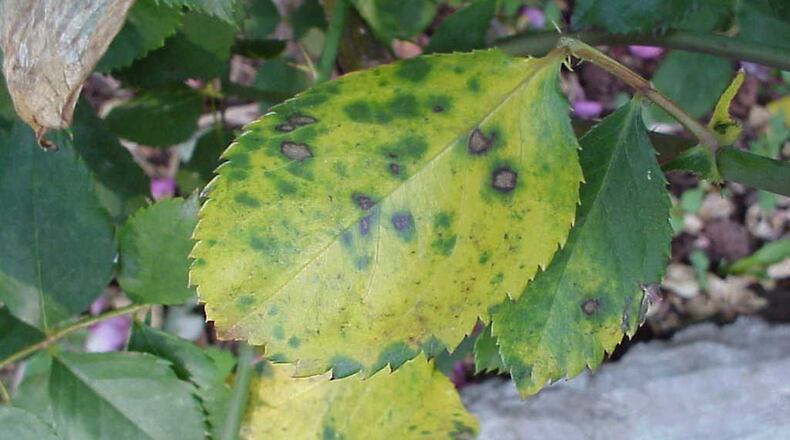Q: I found a formula in a gardening magazine for a rose disease-control spray that contains baking soda, cooking oil and vinegar. What do you think? J. Tanner, Gastonia
A: The problem with recipes like this is twofold: First, mixtures like this are not supported by research. In other words, when scientifically tested, they do not consistently prevent diseases. Generally speaking, that's because different parts of the country have different amounts of disease pressure. A homemade mixture that might work occasionally in one part of the country (Pennsylvania) might not ever work in another part of the country (Georgia) where heat and humidity conspire to favor disease on roses.
Secondly, this recipe contains vinegar and baking soda, which any elementary school student can tell you will react and neutralize each other.
In Georgia, the best rose disease preventers are synthetic fungicides, like Daconil or Infuse. These materials, in combination with disease-resistant roses, can give you consistently beautiful flowers.
Q: I heard you talking on your radio show about a colleague who uses Milorganite twice a year on his lawn. I'd like to give that a try on my bermuda. Stu Lockwood, email
A: My friend Tim Boyer, turfgrass expert with the Super-Sod company, is the one who said he uses Milorganite and has a great-looking zoysiagrass lawn. Zoysiagrass does fine with this type of slow-release fertilizer. On the other hand, bermudagrass needs more fertilizer than zoysia. I think you should apply Milorganite to a bermuda lawn three times per year for best results.
Q: Would a lawn fertilizer containing 10 percent nitrogen produce the same color green as a fertilizer containing 29 percent nitrogen? Joe Mascitti, email
A: The short answer is yes but a better question would be how long will the grass stay green after either of these two fertilizers is applied. My guess is that a 10 percent nitrogen fertilizer is composed of a quickly soluble nitrogen source. A 29 percent nitrogen fertilizer is very likely one that has been manufactured to release nutrients more slowly. For instance, if you apply 10-10-10 fertilizer to your lawn, the nitrogen is quickly dissolved and immediately available to the grass once it's been watered in. The grass would grow rapidly for a couple of weeks but would need more nitrogen after that. On the other hand, a 29-3-4 fertilizer would release some of its nutrients immediately to the grass but would continue to release more over several weeks' time. These controlled-release fertilizers are great for lawns because lawn grasses prefer to be fed gradually rather than all at once.
Q: Violets appeared in my back yard two years ago and have taken over. How can I get rid of the violets and reseed my fescue lawn? Susan H., email
A: I've had great success controlling violets in a fescue lawn by using a product that contains triclopyr (Chickweed, Clover and Oxalis Killer). This can be applied to some, but not all, lawn grasses. Follow the label exactly: applying too much can hurt your fescue. An alternative to spraying is to use a water-powered weeder (bit.ly/h2oweed) to make hand-pulling the wild violets easier.
About the Author
Keep Reading
The Latest
Featured

